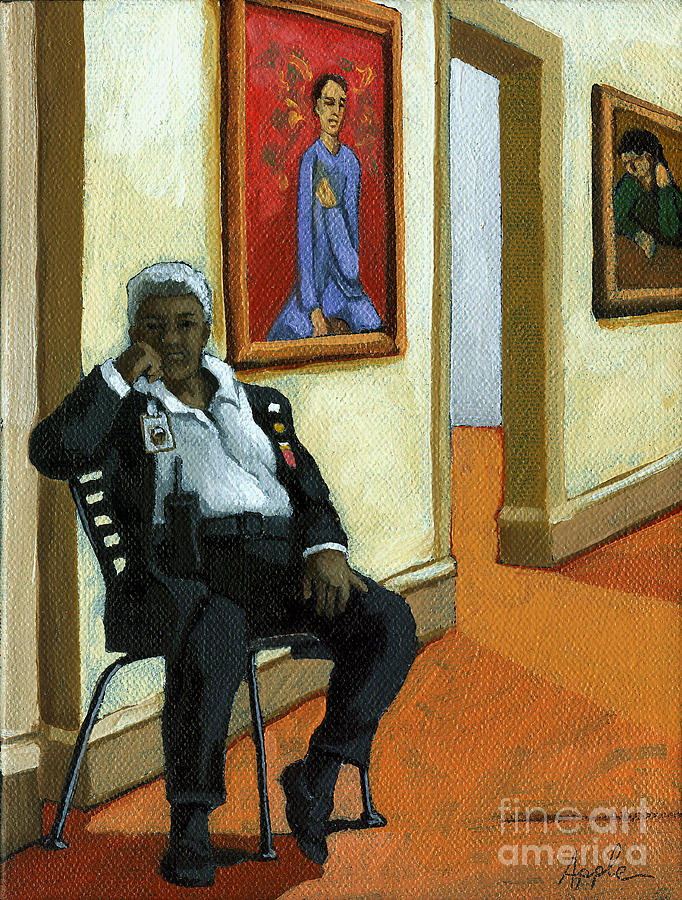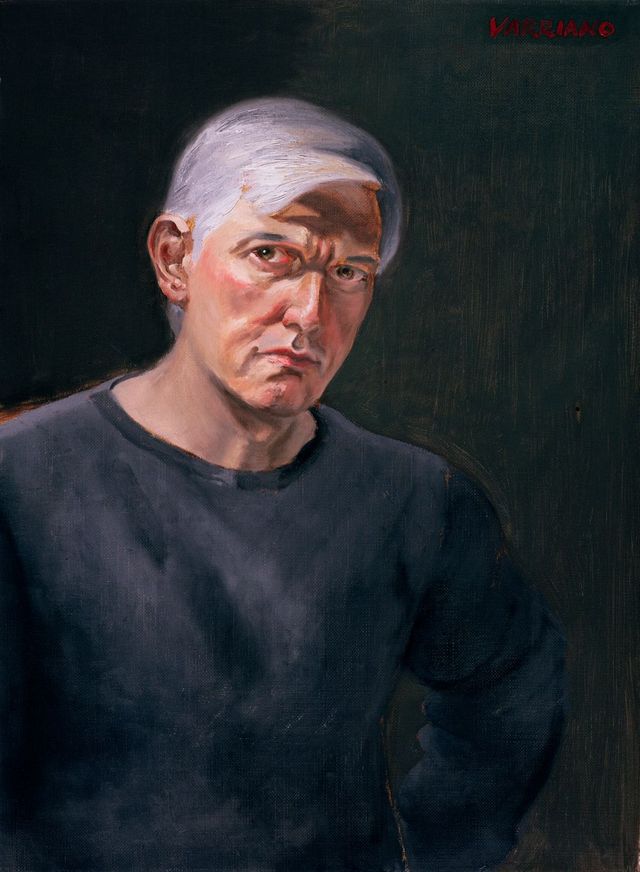The Effect of Figurative Oil Painting on Modern Art and Culture
The Effect of Figurative Oil Painting on Modern Art and Culture
Blog Article
The Function of Emotion and Expression in Metaphorical Oil Painting: An Extensive Evaluation of Subject and Composition
The interplay of feeling and expression in metaphorical oil painting acts as a vital lens where one can check out the complex connection between topic and make-up. Artists harness numerous methods, from color option to brushstroke characteristics, to grow emotional vibration within their works. This nuanced orchestration not only forms visitor understanding but additionally invites a deeper questions right into how these aspects integrate to show the complexities of human experience. As we discover this rich surface, one must think about how details situation research studies light up the more comprehensive ramifications of these imaginative selections.
Understanding Feeling in Art
Feeling in art serves as an effective conduit for expression, enabling musicians to share complex sensations with their job. In metaphorical oil paint, this psychological depth is commonly portrayed with the depiction of the human figure, catching the nuances of human experience. The option of subject, color combination, and brushwork all add to the psychological resonance of a piece.
Artists regularly draw upon personal experiences, social problems, or global motifs to stimulate feelings in the visitor. A picture may show vulnerability, while a dynamic figure in motion can signify freedom or turmoil. These emotional threads connect the visitor to the artwork, promoting a dialogue that transcends the aesthetic tool.
Furthermore, the interplay between light and shadow can enhance psychological strength, leading the viewer's gaze and drawing interest to specific elements within the composition. Making use of structure in oil painting even more adds layers of intricacy, inviting a tactile reaction that enhances the psychological experience. Overall, comprehending emotion in art is essential for appreciating the nuances that identify metaphorical oil paint, as it transforms mere depiction right into an extensive expedition of the human condition.
Crucial Element of Composition
In the realm of figurative oil paint, the make-up serves as the underlying structure that organizes visual elements and enhances the psychological narrative. Vital elements of structure include equilibrium, comparison, focal point, and rhythm, each contributing to the total influence of the artwork.
Equilibrium refers to the distribution of visual weight within the paint, which can be accomplished via asymmetrical or balanced setups. A well-balanced composition gives stability, enabling the customer to involve with the piece sympathetically - figurative oil painting. Contrast, on the various other hand, involves comparing different components, such as dark and light or warm and awesome shades, to direct the viewer's eye and evoke emotional actions
The focal point is crucial, as it guides focus to the most substantial component of the painting, typically highlighting the psychological core of the story. By skillfully integrating these crucial elements, artists can craft psychologically resonant and compelling figurative oil paintings that captivate and involve their audience.
Topic and Its Impact
Subject plays a critical function in figurative oil painting, as it not only serves as the structure for the story yet additionally forms the audience's interpretation and emotional interaction with the artwork. The selection of topic-- be it a solitary figure, a team dynamic, or a thematic depiction-- straight influences the psychological environment communicated to the audience.

As an example, portraits frequently stimulate individual links, revealing the intricacies of human expression and personality, while scenes depicting common tasks can produce a feeling of belonging or nostalgia. The historical and social context see this website of the subject issue enhances the visitor's understanding, triggering deeper reflections on social norms, values, and the human condition.
Different subject matters additionally generate varying degrees of engagement; a dramatic conflict illustrated via figures in stress might elicit sensations of anxiousness or empathy, while tranquil landscapes can conjure up tranquility and consideration. Eventually, the impact of topic in figurative oil paint is profound, as it works as a channel for psychological resonance, leading the viewer's reaction and interpretation, and promoting a connection in between the artwork and the observer. This interaction is vital for the effective interaction of the musician's intent.
Techniques for Stimulating Feelings
The effectiveness of figurative oil painting in communicating feelings is significantly influenced by the techniques utilized by the musician. One of the most important techniques is using color theory, where the tactical selection of shades can evoke details psychological feedbacks. Cozy shades, such as reds and oranges, usually elicit sensations of interest or aggression, while cooler tones like blues and eco-friendlies have a tendency to evoke calmness or sadness.
Another vital method is the control of light and shadow, referred to as chiaroscuro. This technique boosts the three-dimensionality of numbers, producing dramatic contrasts that can magnify emotional depth. The placement of light can lead visitors' emotions, highlighting certain components of the structure.
Brushwork also plays an essential role; loose, expressive strokes can communicate energy and spontaneity, whereas smoother strategies could suggest serenity or accuracy. Additionally, the arrangement of topics within the composition can influence psychological effect. Close closeness can suggest intimacy, while range may indicate isolation.
Inevitably, the combination of these techniques makes it possible for artists to craft stories that resonate with the audience, changing a simple aesthetic experience into an expressive emotional trip. - figurative oil painting

Instance Researches of Noteworthy Functions
Analyzing significant jobs of metaphorical oil painting reveals how various methods are employed to evoke powerful feelings. One excellent situation is Edvard Munch's "The Scream," where the altered figure and swirling background communicate existential fear. Munch's usage of shade-- vibrant oranges and deep blues-- intensifies the emotional effect, showcasing just how combination selections can shape audience experience.
One more substantial job is Pablo Picasso's "Les Demoiselles d'Avignon." Below, fragmented kinds and bold brushstrokes mirror a turbulent psychological landscape, testing traditional representations of the female number. Picasso's cutting-edge composition not just catches the customer's interest however also invites reflection on motifs of identification and sexuality.
Furthermore, Frida Kahlo's "Both Fridas" provides a poignant exploration of duality and self-identity. The different numbers, connected by a common heart, exemplify Kahlo's psychological deepness and personal narrative. figurative oil painting. Her look at this website careful interest to official site detail and symbolic components serve to engage customers on a natural degree
These study emphasize the extensive connection in between emotion and make-up in metaphorical oil paint, exposing how musicians harness strategy to interact complicated feelings and stories that resonate throughout time and culture.

Verdict
Finally, the interaction of feeling and expression in metaphorical oil painting dramatically enhances the customer's experience and interpretation of the art work. Via a cautious choice of subject and compositional strategies, artists communicate extensive narratives that resonate on both global and individual levels. The application of color brushwork, theory, and chiaroscuro more amplifies psychological deepness, transforming each canvas right into an effective reflection of the complexities of the human experience.
In metaphorical oil paint, this emotional depth is frequently represented through the depiction of the human figure, recording the nuances of human experience.In addition, the interplay between light and shadow can intensify psychological strength, directing the customer's stare and attracting attention to particular aspects within the structure. The usage of appearance in oil paint further includes layers of intricacy, inviting a tactile response that enhances the emotional experience.The focal factor is essential, as it guides interest to the most considerable part of the painting, often highlighting the emotional core of the narrative. Ultimately, the impact of subject matter in metaphorical oil paint is extensive, as it offers as an avenue for psychological vibration, guiding the visitor's response and analysis, and fostering a connection between the onlooker and the artwork.
Report this page